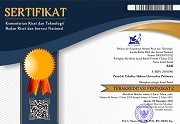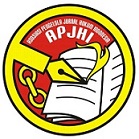The Responsibility of Limited Liability Company Organs in Group Company (Holding) of State-Owned Enterprises
 ), Budi Santoso(2), Paramita Prananingtyas(3)
), Budi Santoso(2), Paramita Prananingtyas(3)
(1) Faculty of Law, Universitas Diponegoro, Semarang, Indonesia
(2) Faculty of Law, Universitas Diponegoro, Semarang, Indonesia
(3) Faculty of Law, Universitas Diponegoro, Semarang, Indonesia
 Corresponding Author
Corresponding Author
Abstract
Introduction: This article examines the legal challenges in the absence of specific regulations governing group companies (holding) in Indonesia, especially within State-Owned Enterprises (SOEs). The core issue lies in determining the liability of the parent company for losses incurred by its subsidiaries due to unclear corporate accountability structures and control relationships in the SOE holding framework.
Purposes of the Research: The purpose of this study is to analyze the legal framework that governs the relationship between a parent company and its subsidiaries in SOE holding structures, with particular attention to the responsibility of corporate organs in addressing subsidiary business risks.
Methods of the Research: This study applies normative juridical research using a statutory and case-based approach. The analysis is based on secondary legal materials and is supported by comparative law methods from other jurisdictions to evaluate the application of doctrines such as piercing the corporate veil and business judgment rule.
Results of the Research: The findings show that the doctrine of piercing the corporate veil may apply when the parent company’s actions result in harm to subsidiaries. However, corporate organs remain protected under the business judgment rule if acting in good faith. This study contributes by offering a legal framework for parent-subsidiary accountability in SOE holdings and comparing it with international practices.Keywords
DOI
10.47268/sasi.v31i3.3010
Published
2025-09-30
How To Cite
@article{SASI3010,
author = {Thomas Dahana and Budi Santoso and Paramita Prananingtyas},
title = {The Responsibility of Limited Liability Company Organs in Group Company (Holding) of State-Owned Enterprises},
journal = {SASI},
volume = {31},
number = {3},
year = {2025},
keywords = {SOE Holding; Group Company; Responsibility.},
abstract = {Introduction: This article examines the legal challenges in the absence of specific regulations governing group companies (holding) in Indonesia, especially within State-Owned Enterprises (SOEs). The core issue lies in determining the liability of the parent company for losses incurred by its subsidiaries due to unclear corporate accountability structures and control relationships in the SOE holding framework.Purposes of the Research: The purpose of this study is to analyze the legal framework that governs the relationship between a parent company and its subsidiaries in SOE holding structures, with particular attention to the responsibility of corporate organs in addressing subsidiary business risks.Methods of the Research: This study applies normative juridical research using a statutory and case-based approach. The analysis is based on secondary legal materials and is supported by comparative law methods from other jurisdictions to evaluate the application of doctrines such as piercing the corporate veil and business judgment rule.Results of the Research: The findings show that the doctrine of piercing the corporate veil may apply when the parent company’s actions result in harm to subsidiaries. However, corporate organs remain protected under the business judgment rule if acting in good faith. This study contributes by offering a legal framework for parent-subsidiary accountability in SOE holdings and comparing it with international practices.},
issn = {2614-2961}, pages = {231--245} doi = {10.47268/sasi.v31i3.3010},
url = {https://fhukum.unpatti.ac.id/jurnal/sasi/article/view/3010}
}
A. G. Castermans dan J. A. van der Weide. The Legal Liability of Dutch Parent Companies for Subsidiaries’ Involvement in Violations of Fundamental, Internationally Recognised Rights. Leiden: Eigen Beheer, 2010.
Ais. Chatamarrasjid. Penerobosan Cadar Perseroan Dan Soal-Soal Aktual Hukum Perusahaan. Bandung: Citra Aditya Bakti, 2004.
Ayub, Zainal Amin, Zuryati Mohamed Yusoff, and Ahmad Nasyran Azrae. “Separate Legal Entity Under Syariah Law and Its Application on Islamic Banking in Malaysia: A Note.” International Journal of Banking and Finance 6 (2020). doi:10.32890/ijbf.6.2.2009.8394.
Chatamarrasjid. Menyingkap Tabir Perseroan (Piercing The Corporate Veil): Kapita Selekta Hukum Perusahaan. Bandung: Citra Aditya Bakti, 2000.
David Cabrelli. Presentation on the Reform of the Law of Directors’ Duties in UK Company Law. University of Edinburgh, 2010.
Diani, R. “Tanggung Jawab Holding Company Terhadap Pihak Ketiga Yang Terikat Hubungan Hukum Dengan Anak Perusahaan.” Simbur Cahaya 24, no. 1 (2017): 4385.
F. Tawakol, W. E. Ibrahim, dan N. M. Alomran. “‘The Legal Basis for a Holding Company’s Liability for Its Subsidiary’s Debt: Comparative Analysis of the UAE and the Egyptian Legal Systems,.’” Journal of Legal, Ethical and Regulatory 2, no. 24 (2021): 12.
Febrina, V. “Pengaruh Dewan Komisaris, Dewan Direksi, Komite Audit, Dan Kepemilikan Manajerial Terhadap Kinerja Keuangan.” Jurnal Informasi Akuntans 1, no. 1 (2022): 80.
Fuady, Munir. Doktrin-Doktrin Modern Dalam Corporate Law Dan Eksistensinya Dalam Hukum Indonesia. Bandung: Citra Aditya Bakti., 2010.
———. Hukum Perusahaan Dalam Paradigma Hukum Bisnis. Bandung: Citra Aditya Bakti, 1999.
Gunawan, Widjaja. 150 Tanya Jawab Tentang Perseroan Terbatas. Jakarta: Forum Sahabat, 2008.
Harjono. Dhaniswara K. Pembaruan Hukum Perseroan Terbatas, Tinjauan Terhadap Undang-Undang No. 40 Tahun 2007 Tentang Perseroan Terbatas. Jakarta: PPHBI (Pusat Pengembangan Hukum dan Bisnis Indonesia), 2008.
Harjono, K. Dhaniswara. Problematika Hukum Bisnis Dan Korporasi. Jakarta: PPHBI (Pusat Pengembangan Hukum dan Bisnis Indonesia), 2010.
I. S. Herdian dan Y. Sumiyati. “‘Penerapan Piercing the Corporate Veil Terhadap Direksi Perusahaan Asuransi Dalam Investasi Berisiko Tinggi Yang Mengandung Conflict of Interest,.’” Justicia Sains: Jurnal Ilmu Hukum 5, no. 2 (2020): 15.
Iris H.-Y. Chiu. Unfinished Work in UK Company Law Reforms: A Normative and European Perspective to Addressing the Gaping Holes in Directors’ Duties. London: University College London, 2019.
J. Robert Creighton. “‘Corporate Law Departments Adjust to Corporate Decentralization,.’” The Business Lawyer 16, no. 4 (1961): 19.
Khairandy. Ridwan. Hukum Perseroan Terbatas. Yogyakarta: FH UII Press, 2014.
Khairandy, Ridwan. Perseroan Terbatas Doktrin, Peraturan Perundang-Undangan, Dan Yurisprudensi. Yogyakarta: Total Media, 2018.
Kuswiratmo, Bonifasius Aji. Keuntungan Dan Risiko Menjadi Direktur, Komisari, Dan Pemegang Saham. Jakarta: PT Visimedia Pustaka, 2016.
Laurensius P. Matheus dan Hary Gunadi. Metodologi Penelitian Hukum: Pendekatan Normatif Dan Pengembangan Hukum Nasional. Jakarta: Prenada Media Group, 2024.
Mamudji, Soerjono Soekanto dan Sri. Penelitian Hukum Normatif: Suatu Tinjauan Singkat. Jakarta: RajaGrafindo Persada, 2006.
Muhammad Syafi’I. “Piercing The Corporate Veil Terhadap Holding Company Dalam Tindakan Hukum Anak Perusahaan.” Prosiding Interdisciplinary Postgraduate Student Conference 2nd, 2016, 129.
Neville Howorth dan Mark Coxall, Chandler v Cape. The New Parent Company ‘Duty of Care’ for Health & Safety Injuries. Clifford Chance LLP, 2012.
Nurhasanah, S. R. P. & Afwa, U. “Pertanggungjawaban Hukum Direksi Induk Terhadap Risiko Bisnis Anak Perusahaan Pada Holding Company BUMN.” Indonesia Law Reform Journal 1, no. 3 (2021): 310.
Peer Zumbansen. “‘Liability within Corporate Groups (Bremer Vulkan) – Federal Court of Justice Attempts the Overhaul,.’” German Law Journal 3, no. 12 (2002): 3.
Petrin, Martin, and Barnali Choudhury. “Group Company Liability.” European Business Organization Law Review 19, no. 4 (2018): 771–96. doi:10.1007/s40804-018-0121-7.
Raaijmakers. Joint Venture. Kluwer Deventer, 1976.
Reuven S. Avi-Yonah. “‘National Regulation of Multinational Enterprises: An Essay on Comity, Extraterritoriality, and Harmonization,.’” Columbia Journal of Transnational Law 42, no. 1 (2003): 21.
Salsabila, Enggi Syefira. “Analisis Yuridis Kewenangan Bumn Untuk Melakukan Monopoli Dan Atau Pemusatan Kegiatan Dalam Perspektif Kepastian Hukum Dan Kesejahteraan Audito Comparative Law.” Journal (ACLJ), n.d., 40.
Saputra, Alpha Alan Darma, and Ratna Wardhani. “Pengaruh Efektivitas Dewan Komisaris, Komite Audit Dan Kepemilikan Institusional Terhadap Efisiensi Investasi.” Jurnal Akuntansi & Auditing Indonesia 21, no. 1 (2017): 24–36. doi:10.20885/jaai.vol21.iss1.art3.
Simanjuntak, Augustinus. Hukum Bisnis, Sebuah Pemahaman Integratif Antara Hukum Dan Praktik Bisnis. Depok: Rajagrafindo Persada., 2018.
Simanjuntak, Emmy Pangaribuan. Perusahaan Kelompok (Seri Hukum Dagang). Yogyakarta: Fakultas Hukum Gadjah Mada, 1994.
Sulistiowati. Aspek Hukum Dan Realitas Bisnis Perusahaan Grup Di Indonesia. Jakarta: Erlangga, 2010.
———. Aspek Hukum Dan Realitas Bisnis Perusahaan Grup Di Indonesia. Jakarta: Erlangga, 2010.
———. Tanggung Jawab Hukum Pada Perusahaan Grup Di Indonesia. Jakarta: Erlangga, 2013.
Sulistiowati. Aspek Hukum Dan Realita Bisnis Perusahaan Grup Di Indonesia. Jakarta: Erlangga, 2010.
———. Aspek Hukum Dan Realita Bisnis Perusahaan Grup Di Indonesia. Jakarta: Erlangga, 2010.
———. Aspek Hukum Dan Realitas Bisnis Perusahaan Grup Di Indonesia. Jakarta: Erlangga, 2010.
———. “Doktrin-Doktrin Hukum Mengenai Tanggung Jawab Hukum Dalam Perusahaan Grup.” Jurnal Hukum Bisnis, 2012, 9.
———. Tanggung Jawab Hukum Pada Perusahaan Grup Di Indonesia. Jakarta: Erlangga, 2013.
Utoyo, B., Marimin, Fahmi, I. & Murdanoto, A. P. “Apakah Pembentukan Holding Meningkatkan Kinerja Perusahaan? Analisis Perbandingan Kinerja Anak Perusahaan ABC BUMN Holding Sebelum Dan Setelah Holdingisasi Dan Faktor Yang Mempengaruhinya.” Jurnal Ilmiah Manajemen 9, no. 2 (2019): 260.
Wesche, P., & Saage-Maaß, M. “Holding Companies Liable for Human Rights Abuses Related to Foreign Subsidiaries and Suppliers before German Civil Courts: Lessons from Jabir and Others v. KiK.” Human Rights Law Review 16, no. 2 (2016): 378.
Widjaya, I.G. Ray. Hukum Perusahaan. Jakarta: Kasaint Blanc. Jakarta: Kasaint Blanc, 2000.
Cited-By:
1. Corporate Liability and the Concept of Limited Liability
Ahmad Afridi
International Journal of Law and Policy vol: 3 issue: 10 first page: 37 year: 2025
Type: Journal [View Source]
| Dublin Core | PKP Metadata Items | Metadata for this Document | |
| 1. | Title | Title of document | The Responsibility of Limited Liability Company Organs in Group Company (Holding) of State-Owned Enterprises |
| 2. | Creator | Author's name, affiliation, country | Thomas Nanda Dahana; Faculty of Law, Universitas Diponegoro, Semarang; Indonesia |
| 2. | Creator | Author's name, affiliation, country | Budi Santoso; Faculty of Law, Universitas Diponegoro, Semarang; Indonesia |
| 2. | Creator | Author's name, affiliation, country | Paramita Prananingtyas; Faculty of Law, Universitas Diponegoro, Semarang; Indonesia |
| 3. | Subject | Discipline(s) | |
| 3. | Subject | Keyword(s) | SOE Holding; Group Company; Responsibility. |
| 4. | Description | Abstract | Introduction: This article examines the legal challenges in the absence of specific regulations governing group companies (holding) in Indonesia, especially within State-Owned Enterprises (SOEs). The core issue lies in determining the liability of the parent company for losses incurred by its subsidiaries due to unclear corporate accountability structures and control relationships in the SOE holding framework.Purposes of the Research: The purpose of this study is to analyze the legal framework that governs the relationship between a parent company and its subsidiaries in SOE holding structures, with particular attention to the responsibility of corporate organs in addressing subsidiary business risks.Methods of the Research: This study applies normative juridical research using a statutory and case-based approach. The analysis is based on secondary legal materials and is supported by comparative law methods from other jurisdictions to evaluate the application of doctrines such as piercing the corporate veil and business judgment rule.Results of the Research: The findings show that the doctrine of piercing the corporate veil may apply when the parent company’s actions result in harm to subsidiaries. However, corporate organs remain protected under the business judgment rule if acting in good faith. This study contributes by offering a legal framework for parent-subsidiary accountability in SOE holdings and comparing it with international practices. |
| 5. | Publisher | Organizing agency, location | Faculty of Law, Universitas Pattimura |
| 6. | Contributor | Sponsor(s) | |
| 7. | Date | (YYYY-MM-DD) | 2025-09-30 |
| 8. | Type | Status & genre | Peer-reviewed Article |
| 8. | Type | Type | |
| 9. | Format | File format | |
| 10. | Identifier | Uniform Resource Identifier | https://fhukum.unpatti.ac.id/jurnal/sasi/article/view/3010 |
| 10. | Identifier | Digital Object Identifier | 10.47268/sasi.v31i3.3010 |
| 11. | Source | Title; vol., no. (year) | SASI; Volume 31 Issue 3, September 2025 |
| 12. | Language | English=en | en |
| 13. | Relation | Supp. Files | |
| 14. | Coverage | Geo-spatial location, chronological period, research sample (gender, age, etc.) | |
| 15. | Rights | Copyright and permissions | Copyright: Authors who publish their manuscripts in this Journal agree to the following conditions: 1. The copyright in each article belongs to the author, as well as the right to patent. 2. Authors can enter into separate, additional contractual arrangements for the non-exclusive distribution of the journal's published version of the work (e.g., post it to an institutional repository or publish it in a book), with an acknowledgment of its initial publication in this journal. 3. Authors are permitted and encouraged to post their work online (e.g., in institutional repositories or on their website) before and during the submission process, as it can lead to productive exchanges, as well as earlier and greater citation of published work. 4. Authors have the right to self-archiving of the article (Author Self-Archiving Policy)
License: The SASI Journal is disseminated based on the Creative Commons Attribution-NonCommercial 4.0 International license terms. This license allows anyone to copy and redistribute this material in any form or format, compose, modify, and make derivatives of this material for any purpose. You cannot use this material for commercial purposes. You must specify an appropriate name, include a link to the license, and certify that any changes have been made. You can do this in a way that is appropriate but does not imply that the licensor supports you or your use.
|
Copyright (c) 2025 Thomas Nanda Dahana, Budi Santoso, Paramita Prananingtyas

This work is licensed under a Creative Commons Attribution-NonCommercial 4.0 International License.
Cited-By:
1. Corporate Liability and the Concept of Limited Liability
Ahmad Afridi
International Journal of Law and Policy vol: 3 issue: 10 first page: 37 year: 2025
Type: Journal [View Source]

 : 785 times
: 785 times Download : 302 times
Download : 302 times
















